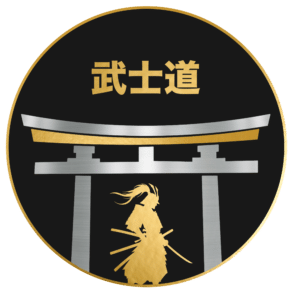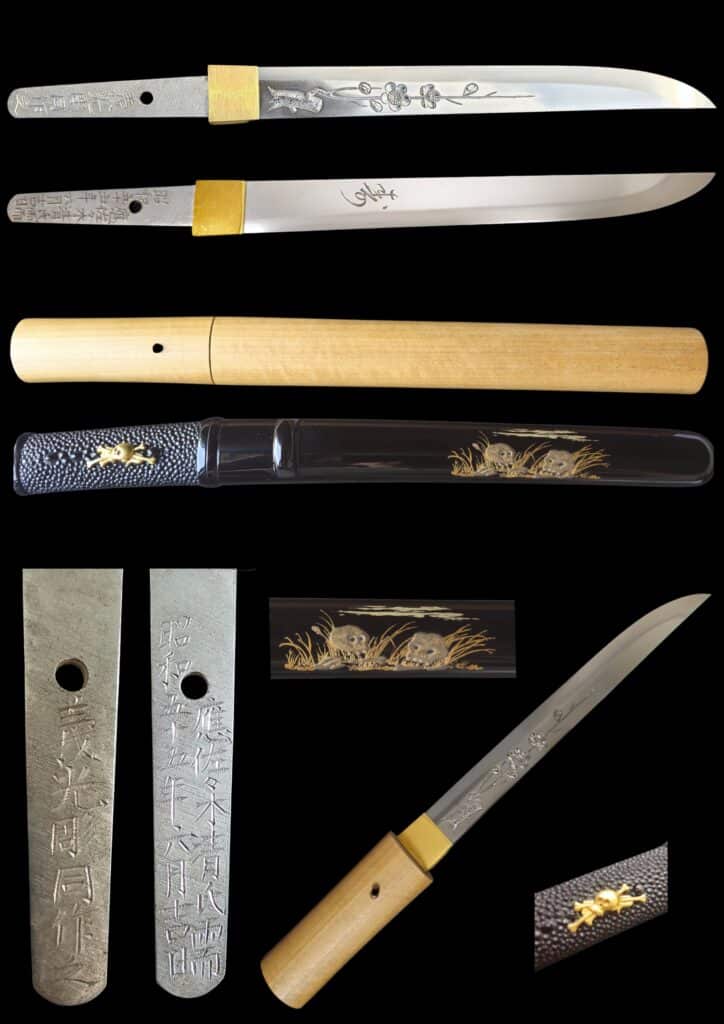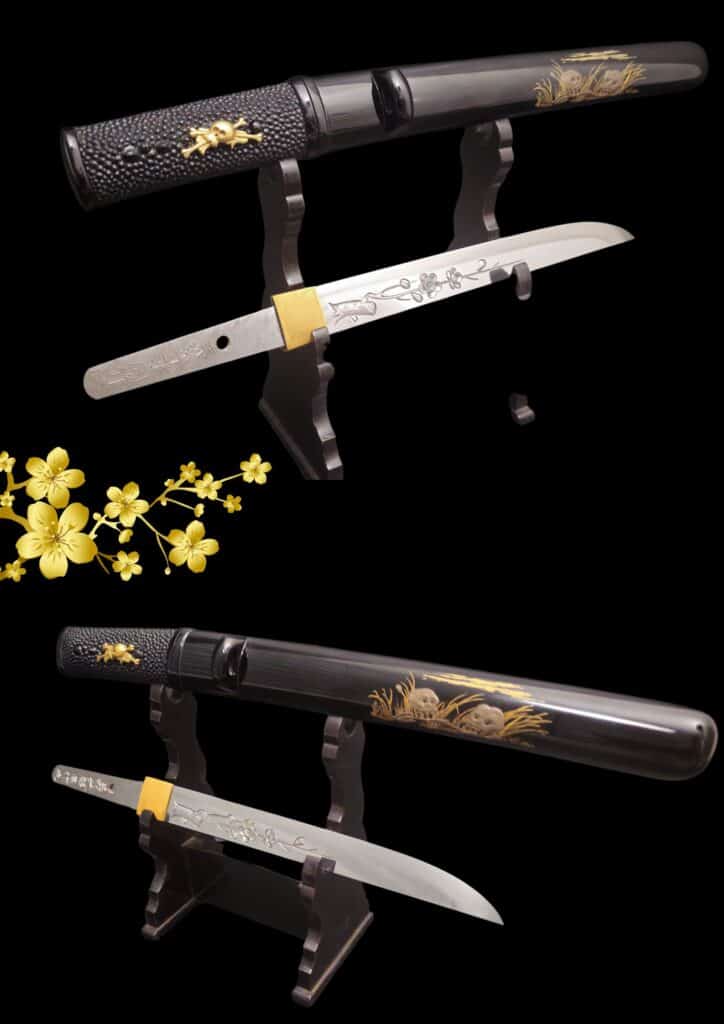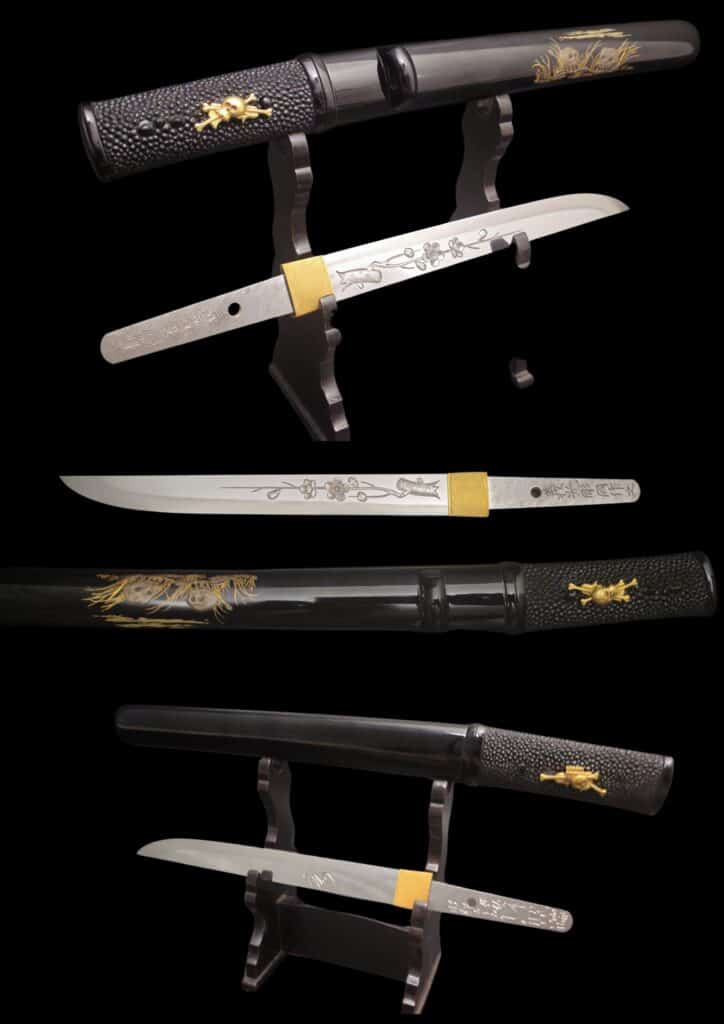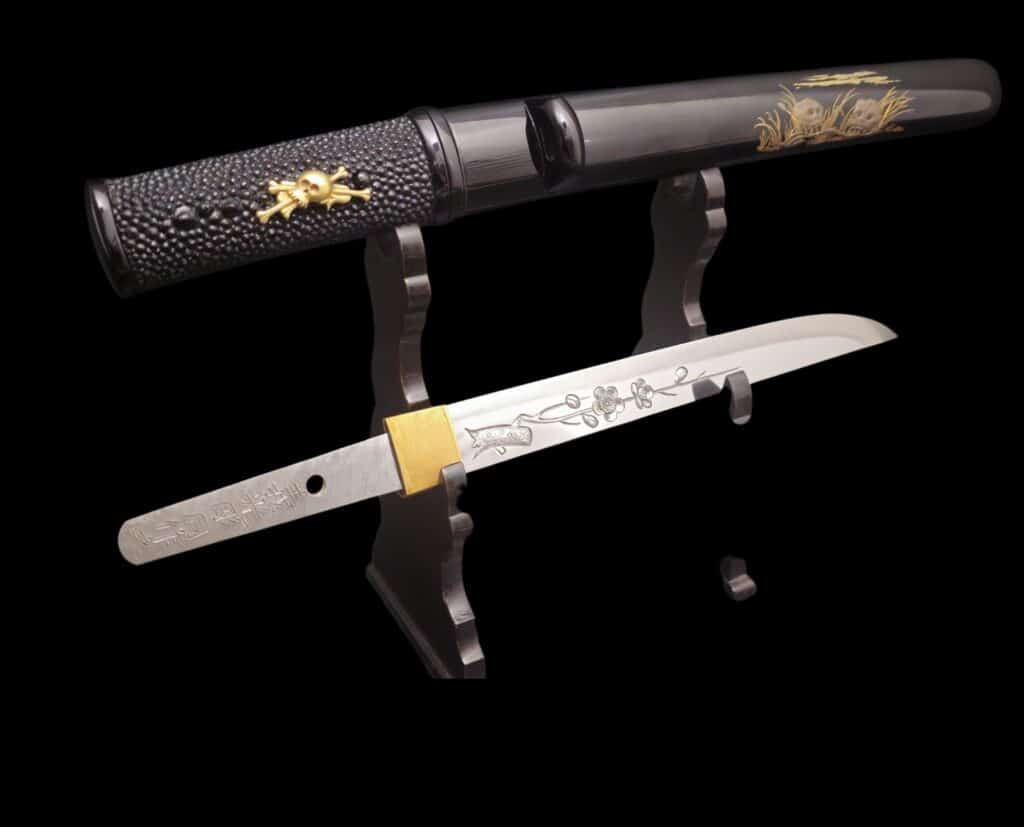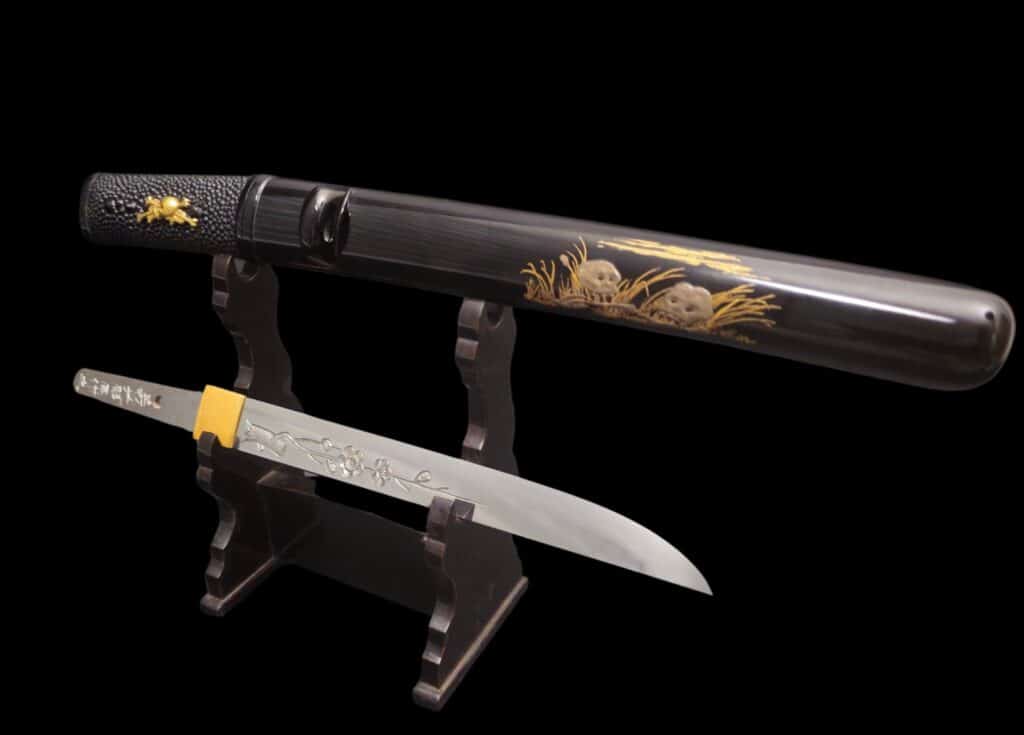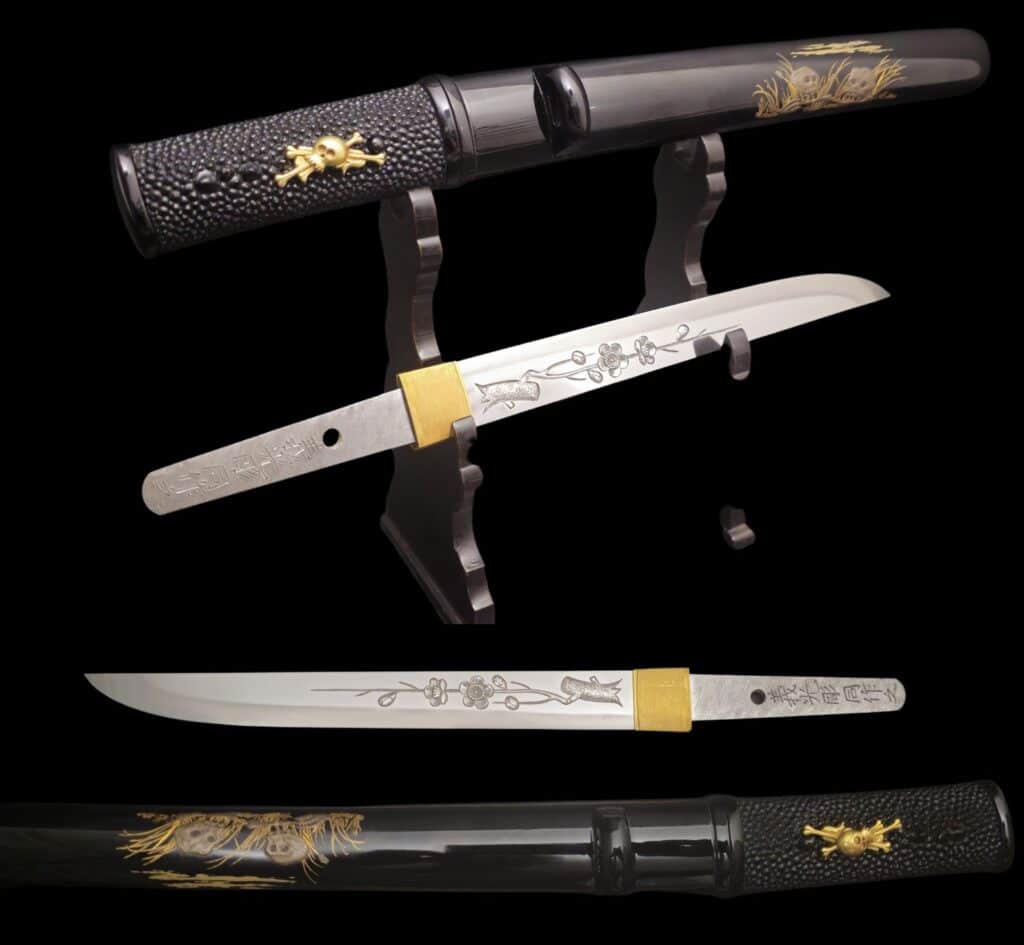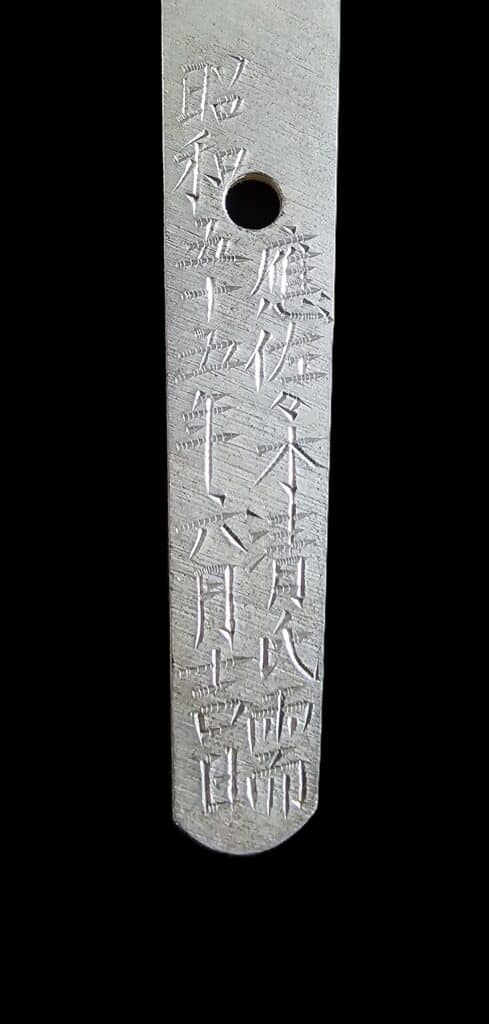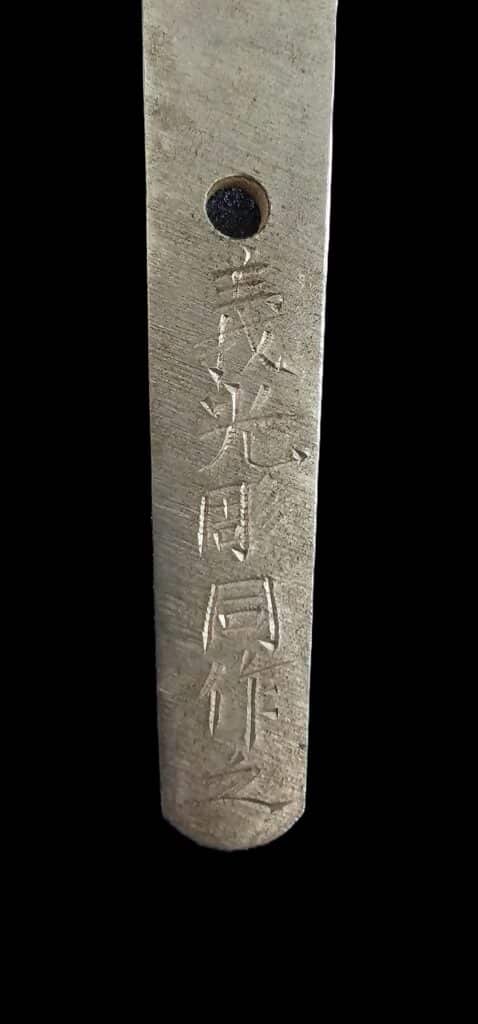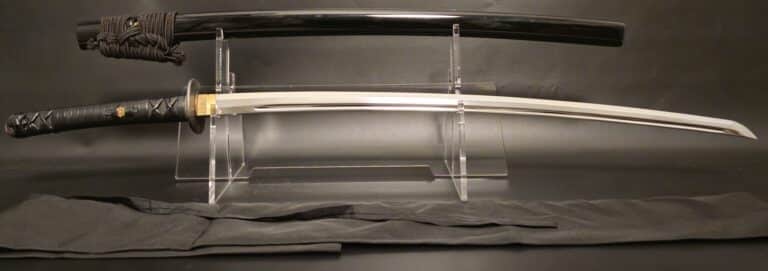Description
Japanese Tanto Ōno Yoshimitsu Mukansa famous Swordmaster.
Ôno Yoshimitsu (大野義光) – Swordmaster.
Ôno Yoshimitsu, born Yoshikawa Mitsuo on October 16, 1948, in Niigata, Japan, is a highly respected modern Japanese swordsmith known for his exceptional craftsmanship and deep reverence for the traditions of Koto-era swordmaking. His lifelong artistic pursuit centers on capturing the spirit—not mere replicas—of historically revered blades, especially the legendary Meibutsu Yamatorige, a National Treasure of Japan.
Yoshimitsu’s style is predominantly Nioi-deki, marked by Ko-nie, Ashi, Yô, and frequent displays of Utsuri—hallmarks of refined and complex traditional Japanese sword aesthetics. He works in various styles but consistently aims to embody the essence and soul of celebrated swords, rather than producing direct copies.
Early Life & Training
-
1948 – Born as Yoshikawa Mitsuo in Niigata, Japan.
-
Youngest of three sons to Ôno Sukasa (father) and Ôno Saki (mother).
-
Developed an early interest in Japanese swords while still in school.
-
1969 – Began formal apprenticeship under renowned smiths Yoshindo and Shoji Yoshihara.
-
1975 – Received his swordsmith license from the Japanese Agency for Cultural Affairs.
-
Awarded the Doryoku Shô (Effort Award) at the 11th Shinsaku-Meitoten, the premier annual modern sword exhibition held at the Japanese Sword Museum.
-
Forging Career
-
1976 – Opened his own forge in Kurosaki City, Niigata.
-
Adopted the swordsmith name Yoshimitsu, incorporating the character 義 from his teacher’s name as is traditional.
-
Began using “Ôno” in his signature, referencing the location of his forge.
-
-
1977 – Married Yoshikawa Kazue and settled in Tokyo.
Awards and Recognition
-
1976–1980 (11th–15th Shinsaku-Meitoten) – Received the Effort Award each year.
-
1981 – Awarded Yûshû Shô (Excellence Award) at the 16th Shinsaku-Meitoten.
-
1982 – Received the prestigious Takamatsu-no-miya Shô (Prince Takamatsu Award).
-
1983 – Honored with the Bunkachô Chôkan Shô (Chairman of the Agency for Cultural Affairs Award).
-
1984–1987 – Won the Takamatsu-no-miya Shô for four consecutive years.
Significant Commissions and Rank
1984 – Commissioned by Ise Shrine, Japan’s most revered shrine, to forge a sacred sword for the 61st Shrine Reconstruction Ceremony (Shikinen Sengû).
-
1987 – Promoted to Mukansa (無鑑査) rank—meaning “beyond judgment”—a distinction that exempts the smith’s work from competition or further awards, acknowledging consistently exceptional quality.
-
1989 – Again invited by Ise Shrine to create a sacred yari (spear) for the 61st reconstruction cycle.Philosophy and Style
Yoshimitsu’s work is most influenced by the Meibutsu Yamatorige, a famed Ko-Bizen tachi designated a National Treasure of Japan. Rather than copying it exactly, he interprets its complex Chôji-midare hamon, elegant Sugata, and luminous Utsuri in his own style. His swords evoke the spirit of the Yamatorige while incorporating subtle changes reflecting his own sensibilities.
“Yoshimitsu is so enthralled by the Meibutsu Yamatorige… he devotes much of his swordsmithing time to recreating it over and over in a spiritual search for the way in which the blade was originally produced.”
His study extends beyond forging—he also researches the impact of polishing techniques and schools by commissioning different polishers for the same style blade, analyzing how the polish alters the visual and artistic impact. This experimentation is funded entirely by Yoshimitsu himself.
Current Work
Ôno Yoshimitsu continues his craft at both:
-
His forge in Niigata, and
-
The Hayashibara Museum forge in Okayama.
He remains one of the foremost figures in contemporary Japanese swordsmithing, dedicated not just to craftsmanship, but to the philosophical and spiritual heritage of Japanese swords.
Mukansa meaning: “without judgment”, meaning that his swords are of such a high level that they are displayed at the annual contemporary sword smith exhibition without examination of a panel of judges; no further awards will be granted, since the swords are above competition.
THIS BLADE BY ONO YOSHIMITSU, WHOM IS RATED MUKANSA IS CONSIDERED TO BE A NATIONAL LIVING TREASURE (AND WILL LIKELY BE MADE SO AFTER HIS DEATH) IS ONE OF THE MOST IMPORTANT AMONGST OTHER LIVING NATIONAL TREASURES.
Tanto Blade is perfect with high skilled Horimono (engraving) Japanese Plum three
The koshirae is black and has on both side’s pure gold menuki of skull and bones.
Also this comes back on the saya its great in detail.
Gold layer habakki
With wooden shirasya.
Classification Tanto
Nagasa 21.6 cm
Weight 138 gram
Mei
昭和五十五年吉日 A lucky day on Showa 55th
慶佐々木清氏需 Ordered by Mr.Kiyoshi Sasaki
義光彫同作之 Yoshimitsu did engraving too (Horido-saku Kore)
June showa 55 (year 1980)
Please enjoy this perfect piece of art.
